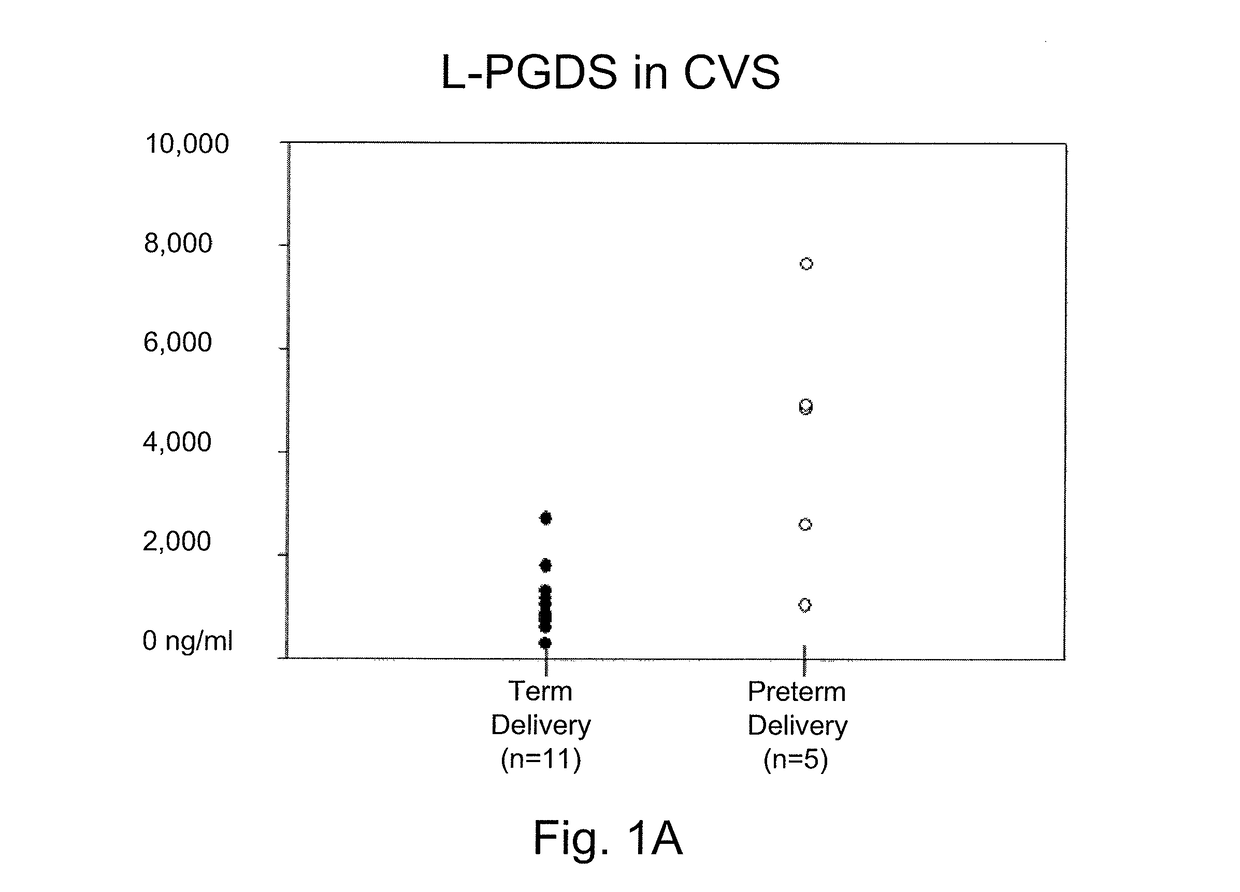Non-invasive biomarker to identify subject at risk of preterm delivery
a preterm delivery and non-invasive technology, applied in the direction of instruments, peptide/protein ingredients, heterocyclic compound active ingredients, etc., can solve the problems of neonatal morbidity and mortality, the effect of testing is limited (58% sensitivity), and the medical cost of birth to one year of age is 10-fold greater for babies born prematurely
- Summary
- Abstract
- Description
- Claims
- Application Information
AI Technical Summary
Benefits of technology
Problems solved by technology
Method used
Image
Examples
Embodiment Construction
[0031]Methods and Procedures for Risk Assessment for Preterm Delivery.
[0032]Cervical vaginal secretions (CVS) are readily collected and constitute a minimally invasive procedure. During a sterile speculum examination of a pregnant woman, a Weck-gel sponge is applied into the cervical os for approximately one minute. The sponge is then removed and placed in a buffer solution containing physiological saline, Trizma buffer, protease inhibitors (EDTA, phenylmethylsulfonyl fluoride, pepstatin) and antibacterial agents (such as sodium azide). This sample collection process is very similar to that used for other routine clinical assays (e.g., fetal fibronectin) that use cervical secretions for the starting sample material. Preferably, the buffer solution has a low protein concentration, e.g., is produced with a small amount or no bovine serum albumin (BSA). This BSA is not required to stabilize the L-PGDS, and may interfere with its measurement.
[0033]L-PGDS concentration levels from the ce...
PUM
| Property | Measurement | Unit |
|---|---|---|
| concentration | aaaaa | aaaaa |
| time | aaaaa | aaaaa |
| concentration | aaaaa | aaaaa |
Abstract
Description
Claims
Application Information
 Login to View More
Login to View More - R&D
- Intellectual Property
- Life Sciences
- Materials
- Tech Scout
- Unparalleled Data Quality
- Higher Quality Content
- 60% Fewer Hallucinations
Browse by: Latest US Patents, China's latest patents, Technical Efficacy Thesaurus, Application Domain, Technology Topic, Popular Technical Reports.
© 2025 PatSnap. All rights reserved.Legal|Privacy policy|Modern Slavery Act Transparency Statement|Sitemap|About US| Contact US: help@patsnap.com



